Choose vacuum pressure transmitters for measurements over the low vacuum range of 25 to 760 Torr, using an absolute or negative gauge reference vacuum range.
Use these vacuum pressure transmitters to measure partial vacuums on manufacturing processes, food packagers, autoclave sterilizers, leak testers, suction pumps and atmospheric simulators.
Vacuum pressure transmitter with a 4-20mA 2 wire current loop output for measuring suction pressures relative to atmospheric pressure or absolute zero referenced pressures.
Products
 DPS300 User Switchable Pressure Range, Volts or Current Output Low DP Sensor - The DPS 300 is a low range HVAC differential pressure sensor. The lowest possible pressure range is 0...100 pascals. 2 or 3 switchable pressure ranges, plus volts or current output are included with most standard configurations.
DPS300 User Switchable Pressure Range, Volts or Current Output Low DP Sensor - The DPS 300 is a low range HVAC differential pressure sensor. The lowest possible pressure range is 0...100 pascals. 2 or 3 switchable pressure ranges, plus volts or current output are included with most standard configurations.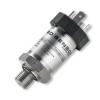 DMK457 Marine Approved Pressure Transmitter - Marine approved pressure transmitter with 4-20mA current loop output for shipbuilding with optional CuNiFe housing for sea-water compatibility
DMK457 Marine Approved Pressure Transmitter - Marine approved pressure transmitter with 4-20mA current loop output for shipbuilding with optional CuNiFe housing for sea-water compatibility
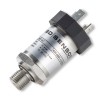 DMP457 Marine Approved Pressure Transmitter
DMP457 Marine Approved Pressure Transmitter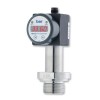 DS200P Sanitary Low Range Pressure Gauge, Switch and Sensor
DS200P Sanitary Low Range Pressure Gauge, Switch and Sensor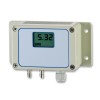 DPS200 HVAC Differential Pressure Transmitter
DPS200 HVAC Differential Pressure Transmitter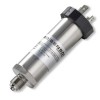 DMP331i High Accuracy Pressure Transmitter
DMP331i High Accuracy Pressure Transmitter
Applications
 -760mmHg to +20 kg/cm² pressure transmitter with HART coms - Compound range transmitter for sensing pressure from -760 mm of mercury vacuum to 20 kilograms per sq cm positive pressure with HART communication.
-760mmHg to +20 kg/cm² pressure transmitter with HART coms - Compound range transmitter for sensing pressure from -760 mm of mercury vacuum to 20 kilograms per sq cm positive pressure with HART communication.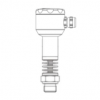 Minus 30 inHg 4-20mA air pressure sensor for measuring vacuum in a sealed tank heated to 350F - A hi-temp media 200°C/392°F max gauge pressure sensor for measuring vacuum in a sealed tank heated to 350 degrees F over a range of 0 to -30 inHg g from the G1/2 male process connection, and sending the corresponding 4-20mA signal through the field housing electrical connection.
Minus 30 inHg 4-20mA air pressure sensor for measuring vacuum in a sealed tank heated to 350F - A hi-temp media 200°C/392°F max gauge pressure sensor for measuring vacuum in a sealed tank heated to 350 degrees F over a range of 0 to -30 inHg g from the G1/2 male process connection, and sending the corresponding 4-20mA signal through the field housing electrical connection.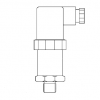 -1 to +5 bar relative 4-20mA out low cost combined vacuum and pressure sensor - Low cost combined vacuum and pressure sensor for measuring over a -1 to +5 bar relative pressure range and generating a 4 to 20 milliamps output signal.
-1 to +5 bar relative 4-20mA out low cost combined vacuum and pressure sensor - Low cost combined vacuum and pressure sensor for measuring over a -1 to +5 bar relative pressure range and generating a 4 to 20 milliamps output signal.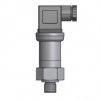 -1 to 20 bar g compound range IS 4-20mA propane pressure sensor for process control use - An intrinsically safe compound range pressure sensor for process control use to measure pressure of propane gas over a range of -1 to 20 bar g from the G1/4 male process connection, and sending the corresponding 4-20mA signal through the DIN plug electrical connection.
-1 to 20 bar g compound range IS 4-20mA propane pressure sensor for process control use - An intrinsically safe compound range pressure sensor for process control use to measure pressure of propane gas over a range of -1 to 20 bar g from the G1/4 male process connection, and sending the corresponding 4-20mA signal through the DIN plug electrical connection.
 0 to -200 mbar negative gauge suction range 4-20mA output stainless steel pressure sensor
0 to -200 mbar negative gauge suction range 4-20mA output stainless steel pressure sensor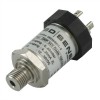 Bi-directional 15psig 4-20mA out air pressure sensor for research use
Bi-directional 15psig 4-20mA out air pressure sensor for research use Negative 250mbarg range 4-20mA out suction range pressure sensor
Negative 250mbarg range 4-20mA out suction range pressure sensor Negative 500 mmH2O g range 4-20mA output pressure sensor
Negative 500 mmH2O g range 4-20mA output pressure sensor Under and Over pressure monitoring -10…+200 mb pressure transmitter
Under and Over pressure monitoring -10…+200 mb pressure transmitter Low vacuum leak detection 4-20mA current loop sensor & gauge
Low vacuum leak detection 4-20mA current loop sensor & gauge High reading rate for measuring dynamic pressures to -200psf
High reading rate for measuring dynamic pressures to -200psf Flush mountable vacuum transmitter
Flush mountable vacuum transmitter
- Marine and IS approved, -1 to 3 mWG compound range pressure transmitter
- 30 psi absolute vacuum pressure transmitter for process plant installations
- 1000 mbar vacuum transmitter for use with waste toner dust
- 50 kPa negative gauge vacuum transmitter for Milk
- Minus 15 psi gauge intrinsically safe pressure transmitter
- -1 to 10 bar ATEX pressure sensor
- Dairy compatible 90 kPa vacuum pressure transmitter
- Vacuum range 0-20 milliamp output pressure transducer for leak testing
- Landfill biogas extraction well depressure pressure transmitter
- 0 to -300 mmH2O vacuum transmitter
- Minus 25 mb vacuum intrinsically safe 4-20mA pressure sensor
- 10 mmHg suction range 4-20mA output sensor
Product Help
Specifying vacuum pressure transmitter requirements
Some questions to ask when defining the product requirements for a vacuum pressure transmitter.
Vacuum range
What range of vacuum do you need to measure, is it over the whole range from atmospheric pressure to a high vacuum, or a partial vacuum such as reducing the pressure to 90% atmospheric pressure?
Reference type
Are you measuring vacuum relative to full vacuum reading, which would need an absolute reference, or are you measuring vacuum relative to atmospheric pressure, which would require a gauge reference?
Current output type
What current output scaling is required for the vacuum transmitter signal, e.g. 4-20mA, 0-20mA?
Accuracy
How accurate does the vacuum reading need to be in % of full range or vacuum units such as mbar, Torr, inHg, mmHg or psi?
Electrical connection
Do you have a preferred way of connecting the current output signal to your vacuum measurement instrumentation?
Do you need a connector or a cable supplied with the transmitter?
Media type
What is the vacuum medium being measured? A vacuum measurement application often involves the removal of air, but it can involve any type of gas, and this may affect the suitability of materials used in the construction of the transducer, so it is an important consideration to ensure the long term reliability of the vacuum pressure transmitter.
Process connection
Do you have a preferred vacuum connection for mounting the transmitter? The level of vacuum being applied can influence the type of connection required, particularly high vacuums where vacuum compatible materials and vacuum seal integrity becomes more restrictive.
Checklist for vacuum pressure transmitter requirements
Define your vacuum pressure transmitter requirements using this checklist:
- Vacuum range?
- Reference type?
- Current output type?
- Accuracy?
- Electrical connection?
- Media type?
- Process connection?
